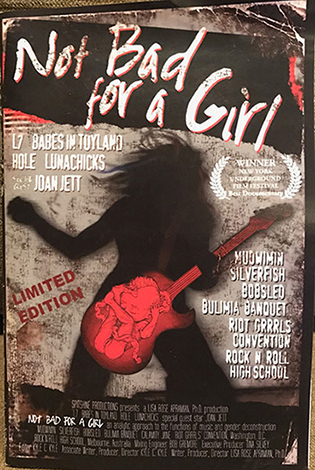





A 2014, 81 min, Regie: Christine Nagel
Ilse Aichinger: "Vielleicht erkennen wir einander nur richtig in einem Licht von Abschied." In dieses Licht taucht der Film in seinen besten Momenten eine große Autorin des 20. Jahrhunderts. Der Standard
Das Stille, Beobachtende und Absurde macht das Geheimnis von Ilse Aichingers Poesie aus, das die Filmbilder von "Wo ich wohne" bewahren. Auch die von ihr gedrehten, nie gezeigten Super-8-Filme halten das Erstaunen darüber wach, dass wir uns vorfinden, und wie wir uns vorfinden. Die Sicht der Entfremdung ermögliche es, wach zu bleiben gegenüber "allen Versuchen der Natur und der Gesellschaften, uns einzuschläfern".
Der Film verführt auf sinnliche Weise, sich auf das Werk von Ilse Aichinger einzulassen, welches in seiner Einzigartigkeit für das 20. Jahrhundert steht und zugleich in seiner existentiellen Dimension zeitlos ist.
In dem Film WO ICH WOHNE ist die Schriftstellerin Ilse Aichinger Protagonistin und Zuschauerin zugleich: Ihre Erzählung "Wo ich wohne" wird zum Kristallisationspunkt von Werk und Person Ilse Aichingers. In der Geschichte des Filmes sinkt die Wohnung einer Frau unverändert ein Stockwerk tiefer. Schließlich landet sie im Keller. Die Umgebung der Frau scheint nicht zu bemerken, was sich ereignet.
In den dramatischen Verlauf der Geschichte hineinverwoben sind Bilder von den Orten, die Ilse Aichingers Schreiben bestimmten: ein Haus, in dem sie einmal wohnte, und in dem sich die absurd-surreale Erzählung "Wo ich wohne" für sie ereignete; die Stadt Wien, deren Gassen und Straßen Ilse Aichinger täglich durchmaß: die Orte, die an den Verlust der Familie erinnern, die 1943 in ein Todeslager deportiert wurden. Des weiteren englische Stadt-Landschaften, die sie als Sehnsuchts-Orte ihrem Werk eingeschrieben haben, da die Rettung nach England nur der Zwillingsschwester Helga mit einem Kindertransport gelang. Biografische Erinnerungen treten in Beziehung zur Fiktion und zu Ilse Aichingers – zum ersten Mal veröffentlichten - Super-8-Filmen, die sie in den 60er Jahren selbst gedreht hat.
Christine Nagel lernte Ilse Aichinger bei einer gemeinsamen Hörspiel-Arbeit im Jahr 2001 kennen - ein halbes Jahr vor ihrem 80.Geburtstag, als die Schriftstellerin noch täglich durch Wien zog, jede Gasse kennend, und am Abend in bis zu drei Kinos ihre Zeit verbrachte - der Stadtraum Wien war ihr Zuhause geworden. Der erste Besuch bei Ilse Aichinger dauerte länger als gedacht, und führte dazu, daß die Filmemacherin über viele Jahre hinweg die Autorin besuchte – bis heute. Sie teilten Zeit und Raum im Kinosaal, der für Ilse Aichinger die ersehnte Möglichkeit war "zu verschwinden". Sie zogen von Kaffeehaus zu Kaffeehaus, an Orten und Plätzen vorbei, die Ilse Aichinger prägten.
Der Film zerstört Chronologie, da ist Finsternis zwischen den Bildern. Auch Erinnerung verfährt nicht chronologisch:
Ich sehe einen Film, absolute Gegenwart – da tauchen Sätze auf, die vor siebzig Jahren in der Wohnung unserer Großmutter in der Hohlweggasse fielen.
Ilse Aichinger, 2001 in der Tageszeitung Der Standard)
⇒ Wo ich wohne - Ein Film für Ilse Aichinger - Offizieller Trailer
⇒ Ein Film für Ilse Aichinger - Website

USA 1995, 90 min, Regie: Lisa Rose Apramian,
Produktion:
Tina Silvey, Koproduktion: Courtney Love and Kurt Cobain
Münchner Erstaufführung, in Deutschland zum ersten mal seit 20 Jahren zu sehen.
The tag line for the documentary Not for a Girl - "an analytic approach to the functions of music and gender deconstruction" - flies like a red flag: you can't help but roll your eyes and shudder at the mirthless dissertation that's suggested. Luckily, writer-director Lisa Rose Apramian, Ph.D., keeps academic babble to a minimun. Filled with rich, often moving insights from the women featured it is a behind-the-scenes, no-bullshit examination of both music created by women and the contexts in which it's created.
What's amazing is the assured handling of both areas. The relief at being taken seriously as musicians is obvious on the faces of the women interviewed so the fact that the isolation, frustration and anger that fuels so much of their work aren't reduced to stereotype or marketing hook ... Yes, it's obvious: it's also powerful. LA WEEKLY, October 1996
Not Bad for a Girl is a feature length documentary on women musicians from the indie rock music genre from 1989-1995. It celebrates madness, creativity, and gender performance, play and deconstruction. The bands featured in the film were all the members of Hole, L7, Lunachicks, Babes in Toyland, Joan Jett, Calamity Jane, Bulimia Banquet, The Mudwimin, Silverfish, 7 Year Bitch, Bratmobile, Bikini Kill.
The documentary features in-depth interviews with every band member, including Donita Sparks and Jennifer Finch from L7, Courtney Love from Hole, Kat Bjelland from Babes in Toyland, and Becky Wreck from the Lunachicks along with clips from live performances from 1989-1994. This wave of women in music set the tone for future generations in the US as well as globally.
Not Bad for a Girl came just after Dr Lisa’s ground breaking qualitative dissertation, on rock music and adolescence. It explores themes such as the musicians’ relationship to their music, (playing styles, kinesis, sounds, lyrics, stage personae), the negotiation of gender identity through rock, subversion of stereotypes and gendered expectations through stage play performances and stylization’s of the body, and the processes of healing and reclaiming through musical expressions.
Best Documentary, New York Underground Film Festival 1996
Nominated: Best Director, 19th Atlanta Film and Video Festival 1995
⇒ Not Bad For A Girl - Trailer
⇒ Not Bad For A Girl Website
USA, 1960, 85 min, Regie: Edmond T. Gréville
Starring Gillian Hills ("Blow Up", "Clockwork Orange"),
David Farrar,
Noëlle Adam,
Christopher Lee,
Adam Faith, Oliver Reed.
Music by John Barry (his first film score)
The British beatnik scene! Sleazy and irresistible!
A moody, sullen teenage beatnik girl digs her heels in when her father remarries and she discovers her new "mother" has a sordid past! Beatniks, chicken, drag racing and striptease. The is a 50s teen movie that has everything going for it.
Beat Girl is set in that mythic milieu in pop culture history – Soho in the late 50s – the moment when England discovered ‘cool’, when wild young merchant seamen such as Tommy Steele and Cliff Richard went looking for kicks during shore time and accidentally imported an American music called rock’n’roll. In coffee bars, across the street from strip joints, the nation’s first ‘teenagers’, fuelled by double shots of espresso, went wild for this new music. Somewhere between child and adult, this new being began to create its own identity and its own language. The film depicts a world of crazy beatnik jazz and early rock’n’roll.
The jazz music is provided by the John Barry Seven (just a year before Bond theme mega-stardom) and the rock’n’roll by Barry’s protégé Adam Faith – who gets to perform two songs. The John Barry theme tune is quite something, maybe even better than his classic Bond theme. Thus it is that Beat Girl became the first British film to have a soundtrack LP release.
‘THIS COULD BE YOUR DAUGHTER’, the poster shrieks, and Beat Girl is undeniably an exploitation film, with the familiar mix of titillation (a lengthy strip scene was cut from the original UK release but is usually reinstated nowadays) and delinquency with a timely lesson in morality thrown in at the end. Unsurprisingly, it is a bit corny and a little clichéd but in all the right places. Gillian Hills is excellent as the wild beat girl ignored by her architect father (obsessed with the creation of his sound-proofed utopia ‘City 2000′) and angry at his new 24-year-old French wife. She spends her time screaming hysterically in her bedroom or sneaking off from St Martin’s College to hang out and drink coffee with her friends and go dancing in cellars and caves ’til the early hours with a young Oliver Reed (now that is wild!). The film is always willing to show the seedier side of life. As in Jane Mansfield’s Soho-set movie Too Hot To Handle (1960), much of the action concerns the strip clubs and their managers (Christopher Lee in both cases) and of course the strippers.
Beat Girl remains an entertaining film and a great picture of that brief moment of British ‘cool’ before the entertainment industry stepped in and turned Cliff, Tommy et al into family entertainers. But while Cliff and Tommy got cleaned up, Soho’s reputation as London’s centre of sex, caffeine and rock’n’roll was made. In the 60s the R’n’B clubs gave the likes of Georgie Fame and The Yardbirds their start and even today coffee shops (mostly Starbucks, granted) exist alongside strip clubs and sex shops. And jazz can still be heard at the Pizza Express.
⇒ Clip aus BEAT GIRL: BEATNIK POEM - Maila Nurmi